Volume 10, Issue 40
Displaying 1-9 of 9 articles from this issue
- |<
- <
- 1
- >
- >|
-
2003Volume 10Issue 40 Pages 1-7
Published: December 25, 2003
Released on J-STAGE: June 28, 2010
Download PDF (3024K) -
2003Volume 10Issue 40 Pages 9-15
Published: December 25, 2003
Released on J-STAGE: June 28, 2010
Download PDF (3462K) -
2003Volume 10Issue 40 Pages 17-22
Published: December 25, 2003
Released on J-STAGE: June 28, 2010
Download PDF (5836K) -
2003Volume 10Issue 40 Pages 23-32
Published: December 25, 2003
Released on J-STAGE: June 28, 2010
Download PDF (1532K) -
2003Volume 10Issue 40 Pages 33-44
Published: December 25, 2003
Released on J-STAGE: March 01, 2011
Download PDF (1922K) -
2003Volume 10Issue 40 Pages 45-52
Published: December 25, 2003
Released on J-STAGE: July 04, 2011
Download PDF (1584K) -
2003Volume 10Issue 40 Pages 53-63
Published: December 25, 2003
Released on J-STAGE: June 28, 2010
Download PDF (2116K) -
2003Volume 10Issue 40 Pages 65-75
Published: December 25, 2003
Released on J-STAGE: June 28, 2010
Download PDF (1796K) -
2003Volume 10Issue 40 Pages 77-82
Published: December 25, 2003
Released on J-STAGE: June 28, 2010
Download PDF (1188K)
- |<
- <
- 1
- >
- >|
